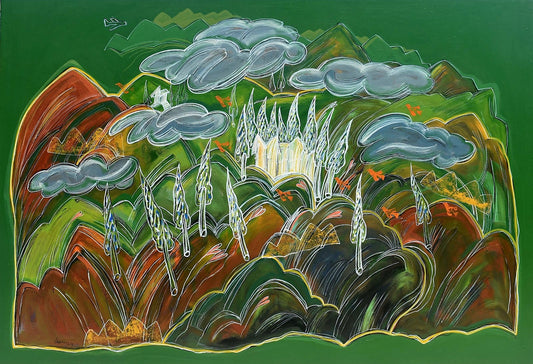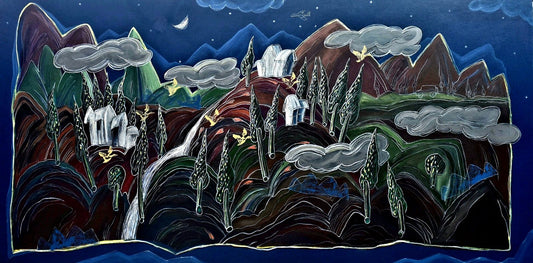
TAPAN MITRA
Tapan Mitra’s practice is defined by a continual evolution, stylistically fluid, emotionally resonant, and grounded in attentive observation. His works reflect a sustained exploration of inner and outer worlds, shaped by shifts in focus rather than abrupt departures. Each phase of his career has revealed a different register of engagement: from the immediacy of still life to the psychological layering of the human form, and more recently, to an expansive, meditative encounter with nature. His early canvases centered on familiar, often overlooked objects. These compositions brought heightened attention to form and gesture, where brushwork carried an expressive charge that lifted the mundane into the realm of reflection. This sensibility gradually gave way to a deeper investigation of the figure. In these works, color became central, not only as a compositional device but as a mode of emotional articulation. Faces and bodies were rendered with a focus on inner states, subtle tension, and shifting identity, articulated through vibrant tonal contrasts and carefully modulated contours.
More recently, Mitra has turned toward the natural world, drawing from Chinese landscape aesthetics and classical Indian visual traditions. Yet this move is not a return to romanticism; rather, it reflects a compositional discipline and a reverence for organic forms that transcend genre. Thin lines, rhythmic brushstrokes, and softly layered planes reveal a sustained attention to pattern, transformation, and interconnection. Within this body of work, one can also discern an undercurrent of Western pop influences, not overt quotations, but fleeting echoes in the treatment of color and surface. These elements, drawn from disparate traditions, are synthesized into a language that is distinctly his own.
Underlying these shifts is a persistent philosophical thread: the view that human experience and the natural world are mutually reflective. Whether painting a solitary figure or a field of trees, Mitra approaches each subject with the same care for balance, interiority, and resonance. His visual decisions are both intuitive and methodical, allowing for spontaneity while maintaining formal clarity. This body of work resists categorical containment. Instead, it reveals a continuity of intent—a search for stillness within change, for presence within flux. Tapan Mitra’s canvases invite close looking and sustained engagement, offering viewers a chance to inhabit spaces where psychological depth and visual grace quietly converge.



